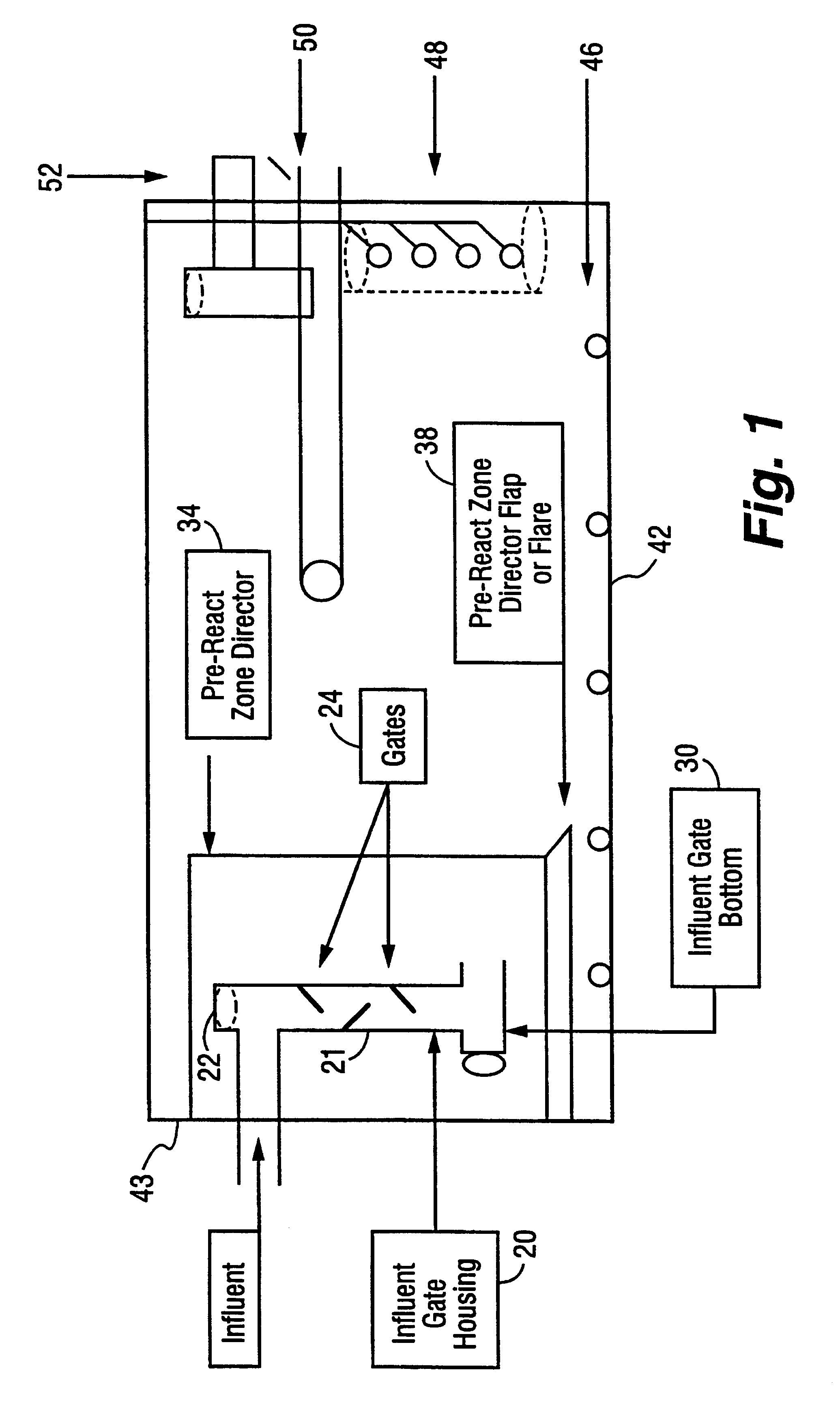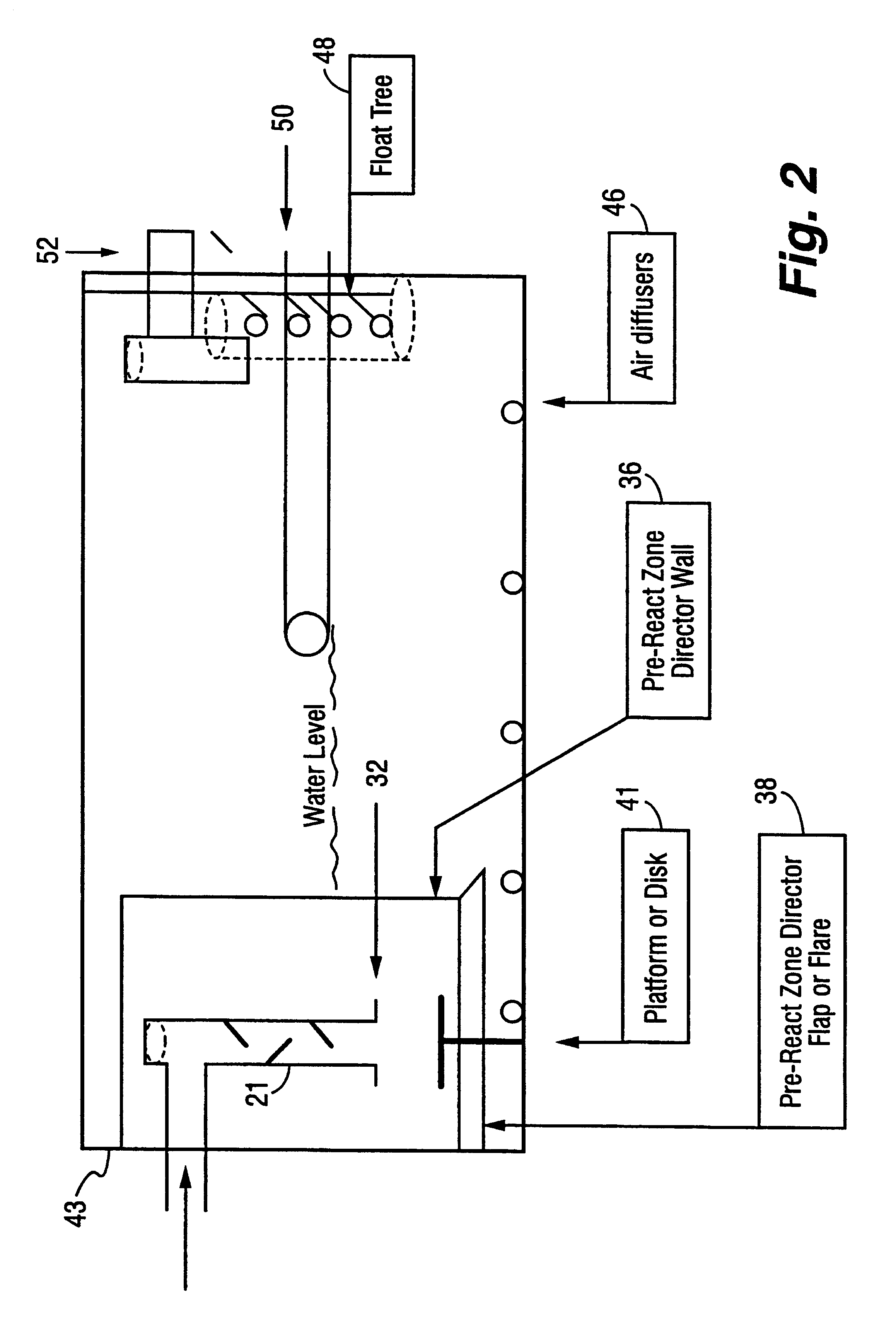Wastewater treatment tank with influent gates and pre-react zone with an outwardly flared lower portion
a technology of influent gates and pre-react zones, which is applied in the direction of sustainable biological treatment, biological water/sewage treatment, sedimentation settling tanks, etc., can solve the problems of many current wastewater treatment plants operating near, increasing the workload of facilities, and increasing the flow velocity of influents
- Summary
- Abstract
- Description
- Claims
- Application Information
AI Technical Summary
Benefits of technology
Problems solved by technology
Method used
Image
Examples
embodiment 50
Referring to FIGS. 8 and 9, shown is a preferred embodiment 50 of the decanter of the present invention. The body 52 of the decanter houses an airtight bladder 54 that is filled with air and used for flotation of the entire decanter 50. Both the bladder 54 and the body 52 of the decanter have end-caps or seals 53. On the bottom of the body 52 are a number of holes 68 to which check valve risers 56 and a decanter pump riser 61 are attached and in fluid communication. Risers 56 and 61 are then secured to body 52 with a watertight seal over the holes 68 and (preferably) tack glued to the bladder 54. A decanter pump or decanter arm is attached to the decanter riser 61 at the decanter effluent exit port 62. At the bottom of each of the check valve risers 56 is a ball check valve which includes a ball 64 set into a check valve housing 63 above a supernatant intake port 66. During operation of the decanter 50, the decanter pump will provide a vacuum at the decanter effluent exit port 62, a...
working example
The following is a general overview of the design process that has been used for designing plants.
The basic characteristics of the influent for the plant must be determined. This includes amount of flow, strength, and type of wastewater to be treated. The effluent requirements for the plant must also be considered. There is a balance between what is feasible with regards to basin sizing, and the strength of wastewater. If it is determined that the wastewater is of a relatively high strength, or exceeds the necessary effluent parameter, it may be necessary to utilize one of various pre-treatment processes. The options are either to reduce the strength, or (possibly) size the basin to accommodate the chemical imbalance and strength of the BOD-5 loading. The primary design parameters are daily flow, peak flow, BOD-5, TSS, P, NH3-N, and TKN, which are the most common characteristics for which effluent is tested. However, the primary design parameters are not limited to these tests and m...
PUM
| Property | Measurement | Unit |
|---|---|---|
| Angle | aaaaa | aaaaa |
| Angle | aaaaa | aaaaa |
| Flow rate | aaaaa | aaaaa |
Abstract
Description
Claims
Application Information
 Login to View More
Login to View More - R&D
- Intellectual Property
- Life Sciences
- Materials
- Tech Scout
- Unparalleled Data Quality
- Higher Quality Content
- 60% Fewer Hallucinations
Browse by: Latest US Patents, China's latest patents, Technical Efficacy Thesaurus, Application Domain, Technology Topic, Popular Technical Reports.
© 2025 PatSnap. All rights reserved.Legal|Privacy policy|Modern Slavery Act Transparency Statement|Sitemap|About US| Contact US: help@patsnap.com



